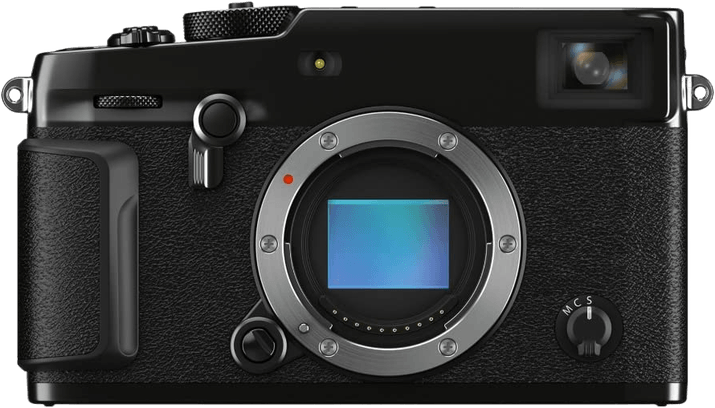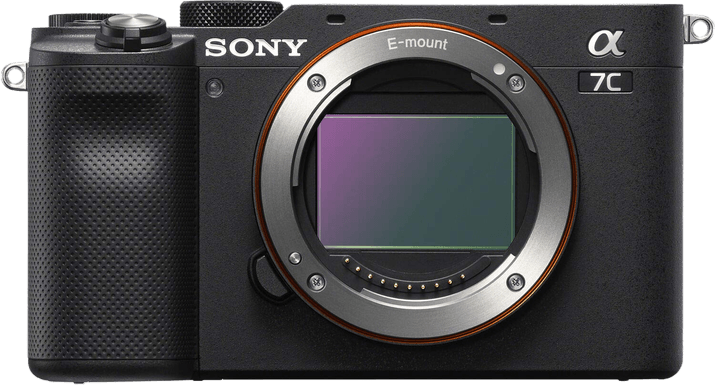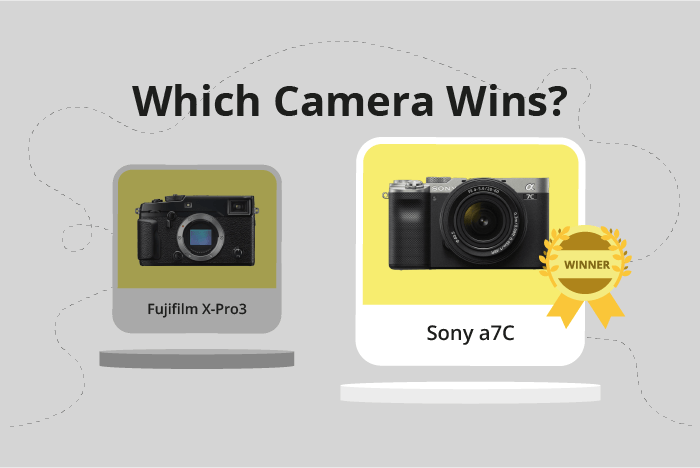Fujifilm X-Pro3 vs Sony a7C Comparison
Fujifilm X-Pro3

Sony a7C

The Sony a7C outperforms the Fujifilm X-Pro3 with a score of 78 out of 100, compared to the X-Pro3’s 72 points. Both mirrorless cameras share the same launch price of $1799 and were released in 2019 and 2020, respectively. The Sony a7C’s advantage lies in its smaller size, measuring 124 x 71 x 60mm, while the Fujifilm X-Pro3 is larger at 141 x 83 x 46mm. However, the X-Pro3 is slightly lighter, weighing 497g compared to the a7C’s 509g.
Despite its smaller size, the Sony a7C delivers better performance, making it the winner in this comparison. The Fujifilm X-Pro3, though, has its merit in a lighter body. Both cameras offer great value for their price, with the a7C being the more compact and powerful option and the X-Pro3 catering to those who prioritize a lighter camera.
Fujifilm X-Pro3 vs Sony a7C Overview and Optics
The Sony a7C outperforms the Fujifilm X-Pro3 in optics with a score of 80/100 compared to the X-Pro3’s 67/100. Both cameras share common specifications, such as CMOS sensors and similar megapixel counts (24.2 for the Sony a7C and 26 for the Fujifilm X-Pro3). Additionally, both have fast shooting speeds (10 fps for the Sony a7C and 11 fps for the Fujifilm X-Pro3).
The Sony a7C surpasses the Fujifilm X-Pro3 in several aspects. Its full-frame sensor size provides better image quality and low-light performance than the X-Pro3’s APS-C sensor. The a7C’s sensor has a DXOMARK score of 95, while the X-Pro3’s score is unavailable due to DXOMARK not scoring Fujifilm cameras. Furthermore, the Sony a7C offers image stabilization, which helps reduce camera shake and improve sharpness in handheld shots. This feature is not present in the Fujifilm X-Pro3.
On the other hand, the Fujifilm X-Pro3 has a slightly higher megapixel count (26) than the Sony a7C (24.2), which may result in marginally better image resolution. However, this difference is minimal and may not be noticeable in most shooting scenarios.
In terms of lens mounts, the Sony a7C uses the Sony FE mount, while the Fujifilm X-Pro3 uses the Fujifilm X mount. The choice between these two mounts depends on the user’s lens preferences and existing lens collection.
Considering the above points, the Sony a7C is the superior camera in terms of optics. Its full-frame sensor, image stabilization, and higher DXOMARK score contribute to its better performance. Although the Fujifilm X-Pro3 has a slightly higher megapixel count, this advantage is not significant enough to outweigh the benefits of the Sony a7C.
Fujifilm X-Pro3 vs Sony a7C Video Performance
The Fujifilm X-Pro3 outperforms the Sony a7C in video capabilities, scoring 91/100 compared to the Sony’s 70/100. Both cameras share some common specifications, such as 4K video resolution and built-in time-lapse functionality. However, the Fujifilm X-Pro3 excels in certain areas, making it the better option for video.
The superior aspects of the Fujifilm X-Pro3 include a higher maximum video dimension of 4096 x 2160, compared to the Sony a7C’s 3840 x 2160. This difference allows for more detailed and sharper video quality. Additionally, the X-Pro3 boasts a significantly higher maximum video frame rate of 120fps, while the Sony a7C only offers 30fps. This higher frame rate enables the X-Pro3 to capture smooth slow-motion footage, which the a7C cannot achieve.
On the other hand, the Sony a7C does not have any specific advantages in video capabilities over the Fujifilm X-Pro3. Both cameras share the same 4K video resolution and time-lapse functionality, but the a7C fails to surpass the X-Pro3 in any other video-related aspects.
In the comparison of video capabilities, the Fujifilm X-Pro3 emerges as the clear winner due to its higher video dimensions and superior frame rate. The Sony a7C, while still offering 4K video and time-lapse functionality, does not provide any additional benefits that would make it a better choice for video. Therefore, for those prioritizing video performance, the Fujifilm X-Pro3 is the optimal choice.
Fujifilm X-Pro3 vs Sony a7C Features and Benefits
The Fujifilm X-Pro3 wins in the features comparison with a score of 85/100, while the Sony a7C scores 81/100. Both cameras share several common specifications, such as a 3-inch touchscreen, flip screen, and the absence of GPS. Additionally, each camera is equipped with WiFi and Bluetooth connectivity.
The X-Pro3 outperforms the a7C in screen resolution with 1,620,000 dots, compared to the a7C’s 921,600 dots. This higher resolution provides a clearer and sharper viewing experience on the X-Pro3, making it easier to review images and navigate the camera’s menu. The difference in screen resolution contributes to the X-Pro3’s higher feature score.
On the other hand, the Sony a7C does not have a significant advantage over the Fujifilm X-Pro3. Both cameras share many similar features, and the a7C’s slightly lower score does not indicate a major weakness in its specifications. The a7C remains a strong competitor in the camera market.
Considering the feature scores and specifications, the Fujifilm X-Pro3 is the better camera due to its higher screen resolution, providing a superior user experience. The Sony a7C, while slightly behind in this comparison, remains a reliable and competitive option for photographers.
Fujifilm X-Pro3 vs Sony a7C Storage and Battery
The Fujifilm X-Pro3 outperforms the Sony a7C in storage and battery with a score of 71/100 compared to the Sony a7C’s 45/100. Both cameras accept SD, SDHC, and SDXC memory cards and are UHS-II compatible. They also support USB charging.
The X-Pro3 excels with its dual memory card slots, offering more storage flexibility than the a7C’s single slot. This makes the X-Pro3 more suitable for professional use, where photographers may need to switch between cards or backup their work.
On the other hand, the Sony a7C boasts a superior battery life, delivering 740 shots per charge compared to the X-Pro3’s 400 shots. This advantage allows users to shoot for longer periods without the need for frequent battery replacements or recharging.
In terms of storage and battery, the Fujifilm X-Pro3’s dual memory card slots make it a better option for professionals, while the Sony a7C’s extended battery life is beneficial for extended shooting sessions.
Fujifilm X-Pro3 vs Sony a7C – Our Verdict
Are you still undecided about which camera is right for you? Have a look at these popular comparisons that feature the Fujifilm X-Pro3 or the Sony a7C:

